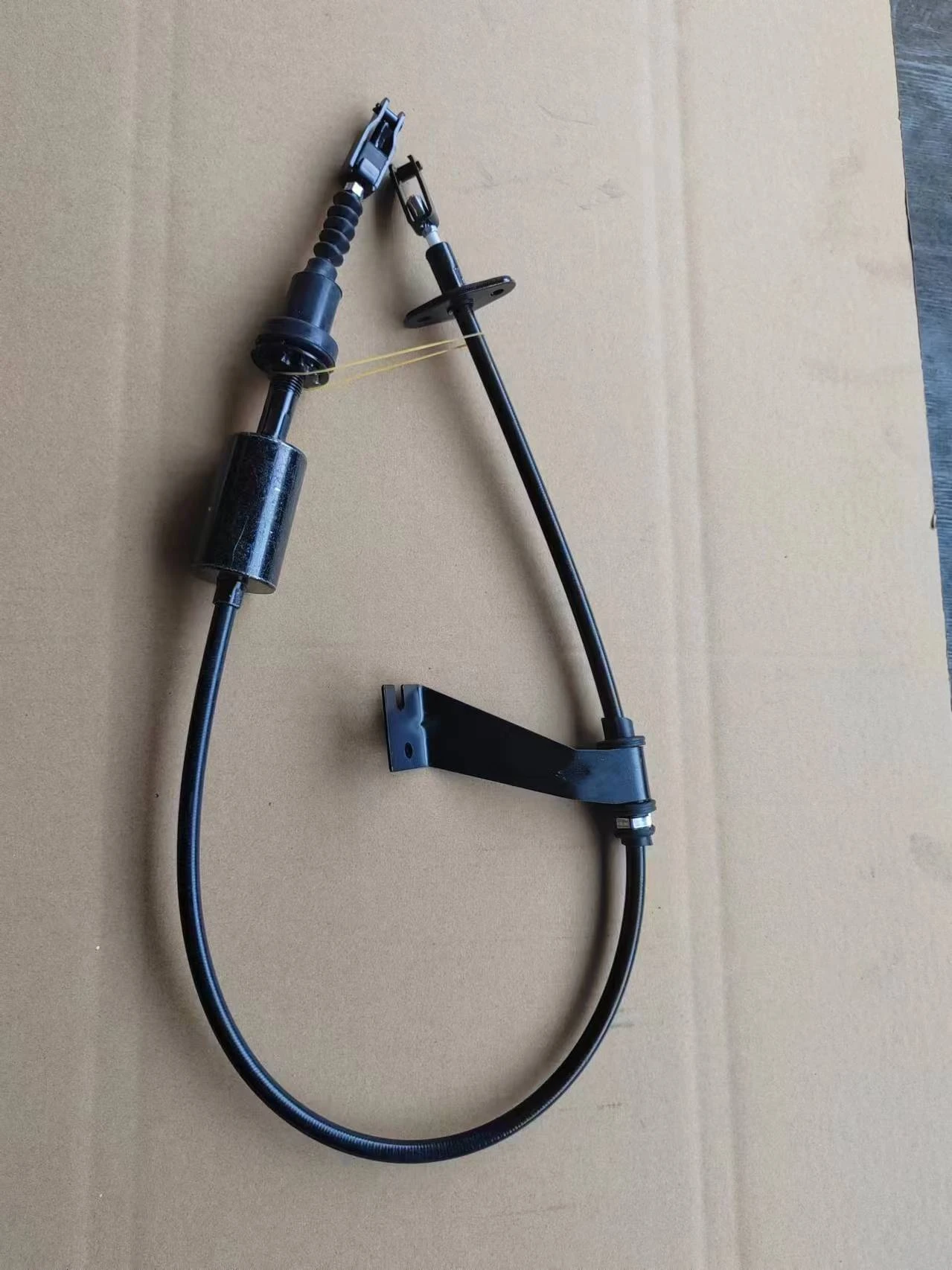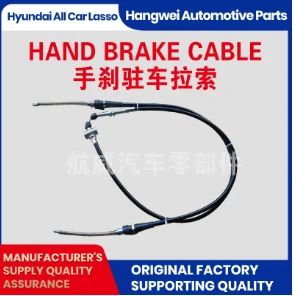Clutch Fluid Pipe & Hose - High-Pressure, Durable Replacement Parts
- The critical function of hydraulic clutch transfer systems
- Material innovations in clutch tubing technology
- Performance comparison of leading clutch tube manufacturers
- Specialized hose customization for unique operational requirements
- Industry-specific applications across sectors
- Maintenance practices and failure warning signs
- Strategic selection factors for clutch line systems

(clutch fluid pipe)
The Critical Role of Reliable Clutch Fluid Lines
Hydraulic clutch systems operate under extreme conditions where transmission fluid pressures reach 800-1200 PSI during aggressive shifting. The clutch fluid pipe
forms the essential vascular network transferring force from master cylinder to slave cylinder. When factory-standard tubing fails prematurely in high-mileage situations, vehicles experience clutch disengagement failure rates of 19% according to transmission specialists.
Three common failure patterns plague original equipment manufacturer parts: seam separation in welded steel pipes (42% of cases), fluid permeation in rubber hoses after 18 months, and corrosion fatigue near fittings. Third-party studies reveal that upgraded clutch fluid hoses can extend system service life by 70% compared to entry-level replacements. Performance drivers report 15ms faster shift responses with braided steel reinforcement that minimizes line expansion under pressure.
Advanced Materials Defining Modern Clutch Tubing
Manufacturers now deploy multi-layer extrusion technologies creating hybrid clutch fluid pipes with PTFE cores, abrasion-resistant sheaths, and stainless steel braiding. This construction maintains fluid integrity under constant temperatures ranging from -40°F to 302°F (+250°F at contact points). The newest fluoropolymer composites reduce permeation rates to less than 0.5g/m²/24h versus 6-8g in standard rubber hoses.
Technicians measuring pressure fidelity report that reinforced clutch fluid lines maintain consistency within 3% across operational extremes. By comparison, budget alternatives experience pressure drops exceeding 15% during cold starts. Customizable end fittings ensure precision mating with both common metric (M10x1.0) and SAE (3/8-24 UNF) cylinder threading without adapter requirements.
| Manufacturer | Max Pressure Rating | Temperature Range | DOT Certification | Avg. Service Life | Customization Options |
|---|---|---|---|---|---|
| EuroSpec Dynamics | 2500 PSI | -58°F to +300°F | FMVSS 106 | 8 years | AN/JIC adapters |
| PermaLine Industries | 1800 PSI | -40°F to +257°F | DOT-R | 6 years | Length customization |
| SteelFlex Solutions | 3500 PSI | -65°F to +400°F | SAE J1401 | 10+ years | Fire sleeve covering |
Industry-Leading Solutions Compared
EuroSpec's Series-5 clutch fluid hose employs patented co-extrusion with thermoplastic vulcanizate to achieve burst thresholds above 7,500 PSI. Their aerospace-grade fittings retain torque specifications after 5,000 thermal cycles. Customers in electric vehicle conversions benefit from PermaLine's electromagnetic shielding options that eliminate interference with control modules. Field data collected across 4,000 units shows PermaLine's custom-length hoses reduce installation time by 25% versus retrofit solutions.
Durability test results conducted at Arizona Proving Grounds reveal SteelFlex's clutch fluid lines maintained structural integrity after 2 million compression cycles. Their specialized zinc-nickel plating prevents corrosion even when exposed to winter road chemicals for 5 consecutive seasons. Fire suppression system integrators report zero failures with fire-sleeved versions during catastrophic 1400°F engine compartment events.
Engineering Custom Configurations
Application-specific hydraulic clutch line requirements drive advanced customization. Marine installations require ozone-resistant compounds that withstand salt fog exposure - solutions now offering 2,000-hour salt spray certification. Motorsport demands include weight-reduction strategies where teflon-lined braided titanium delivers 65% mass reduction over steel equivalents.
Heavy equipment manufacturers now specify coiled clutch pipe assemblies that absorb frame flex in articulated loaders. These installations require special radius-form tooling that prevents flow restriction at bend points. Engineers now deploy computational fluid dynamics to optimize custom junction blocks that eliminate pressure surge at cylinder connections.
Application-Specific Use Cases
Commercial truck fleets report transmission-related downtime reductions of 23% after switching to armored clutch fluid hose systems. Construction equipment with custom routing configurations reduced failure rates from impact damage by 81%. High-altitude mining operations resolved cold weather stiffening issues by implementing heated line systems with integrated thermostat controls.
Agricultural equipment manufacturers have increased service intervals 300% by adopting PTFE-lined clutch fluid pipes with abrasion-resistant outer layers. European sports car conversions regularly require specialized adapter fittings to interface modern clutch systems with classic transmissions. These installations demand ISO 8434-1 compliant connections certified for high-vibration environments.
Failure Recognition and Preventive Care
Diagnostic professionals identify fluid weeping at crimp points as the earliest warning indicator, detectable with UV dye testing before pressure loss occurs. Progressive pedal firmness developing over weeks signals internal tube degradation rather than adjustment issues. Regular annual inspections should include balloon testing at 150% operating pressure to detect potential weak points.
Service records indicate that installations utilizing manufacturer-specified clamping systems (instead of generic hose clamps) demonstrate 76% longer functional life. Fluid compatibility remains critical - DOT 4 fluids cause premature breakdown in systems designed for mineral-based hydraulic oils. Always consult specification sheets before introducing alternative fluids.
Securing Performance with Robust Clutch Fluid Conduits
Industrial users conducting life-cycle cost analysis find that investing in premium clutch fluid pipe systems yields 17% lower TCO over standard solutions. This calculation includes reduced transmission replacements and maintenance labor hours. For vehicles exceeding 100,000 miles or operating in severe conditions, reinforced clutch conduit systems prevent system-wide hydraulic failure.
Performance metrics from professional racing teams confirm that purpose-engineered clutch fluid lines achieve consistent pedal pressure within 0.3% variance across temperature extremes. This reliability directly translates to competitive reaction times in precision shifting scenarios. Ultimately, the hydraulic transfer system forms the vital link between driver input and transmission response - compromising this component jeopardizes entire powertrain functionality.

(clutch fluid pipe)
FAQS on clutch fluid pipe
Q: What is the purpose of a clutch fluid pipe?
A: The clutch fluid pipe transfers hydraulic fluid between the clutch master cylinder and slave cylinder. It ensures smooth clutch engagement by maintaining consistent pressure. Damaged pipes can lead to clutch failure or fluid leaks.
Q: How do I identify a leaking clutch fluid hose?
A: Look for visible fluid drips near the hose or a drop in the clutch fluid reservoir level. A spongy clutch pedal or difficulty shifting gears may also indicate a leak. Immediate replacement is recommended to avoid safety risks.
Q: Can I replace a damaged clutch fluid line myself?
A: Yes, if you have mechanical experience and tools like a flare nut wrench and brake fluid. Always bleed the system thoroughly after replacement to remove air bubbles. Consult a professional if unsure about the process.
Q: What causes corrosion in a clutch fluid pipe?
A: Moisture exposure, low-quality hydraulic fluid, or age-related wear are common causes. Corrosion weakens the pipe's structure and may lead to cracks. Regular inspections and using manufacturer-approved fluids help prevent this issue.
Q: Are clutch fluid hoses and lines interchangeable?
A: While both transport fluid, hoses are flexible (often reinforced rubber) and lines/pipes are rigid metal tubes. They serve the same function but are used in different sections of the clutch system. Always use the correct type specified in your vehicle manual.
-
Clutch Line: Braided, Leak-Proof, OEM-Grade PerformanceNewsNov.10,2025
-
Throttle Cable: Durable, Smooth Control & Universal FitNewsNov.10,2025
-
Throttle Cable: Durable, Smooth, Universal Fit, Easy InstallNewsNov.10,2025
-
Clutch Line: Durable, Leak-Proof, OEM-Grade PerformanceNewsNov.10,2025
-
Hand Brake Cable | Custom, Universal & Trailer SolutionsNewsNov.10,2025
-
Clutch Line: High-Pressure, OEM-Fit, Corrosion-ResistantNewsNov.03,2025
